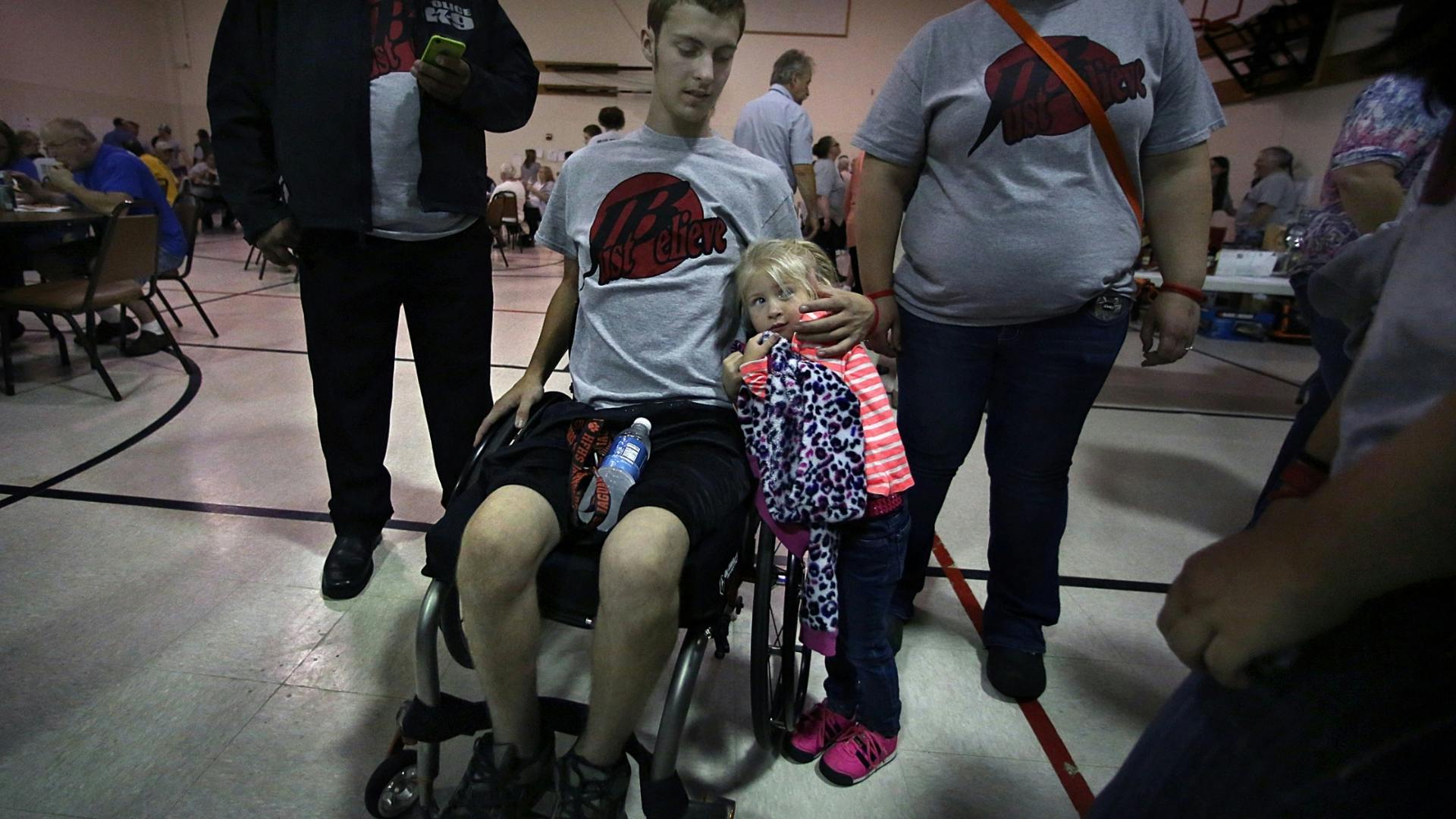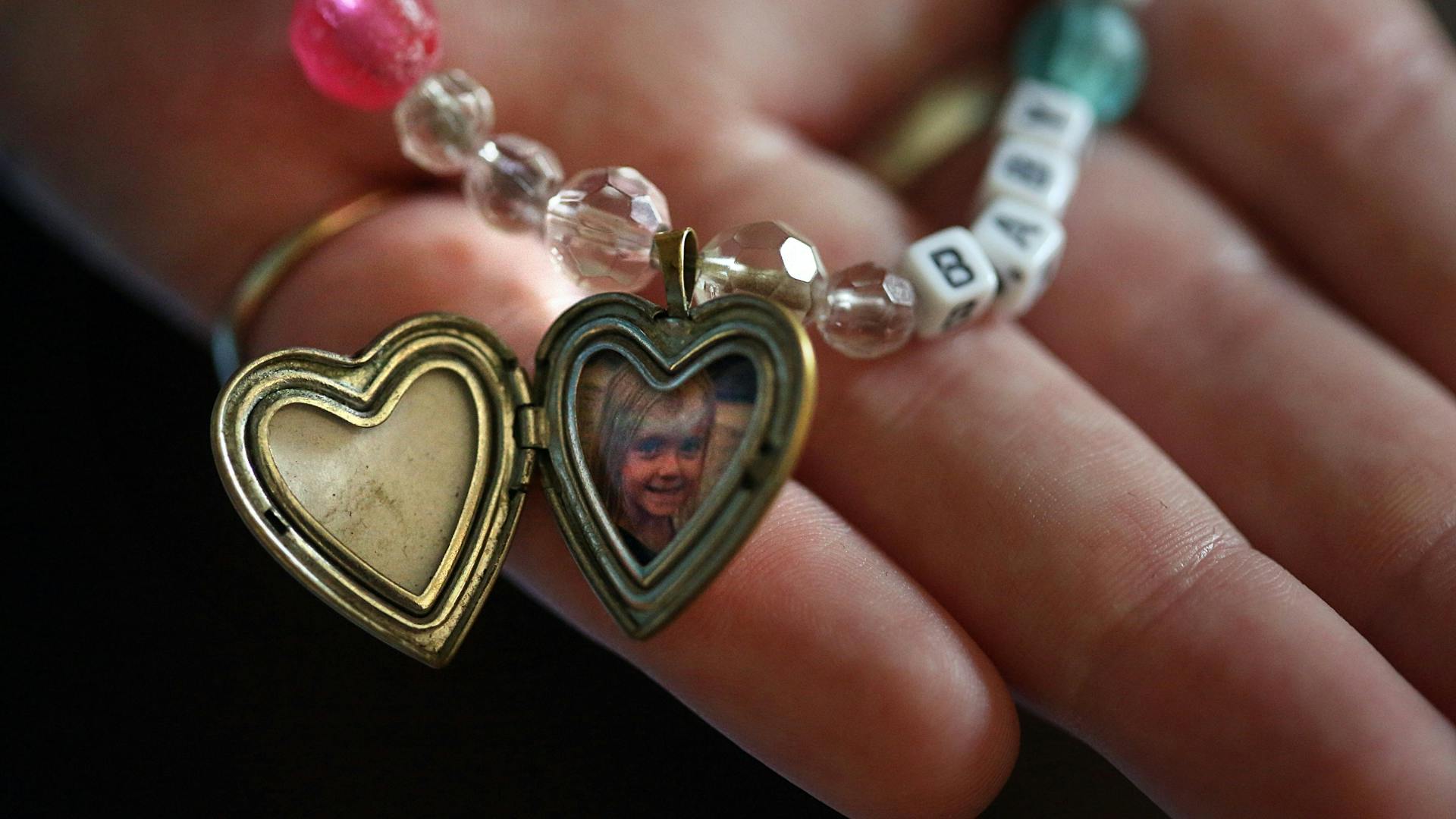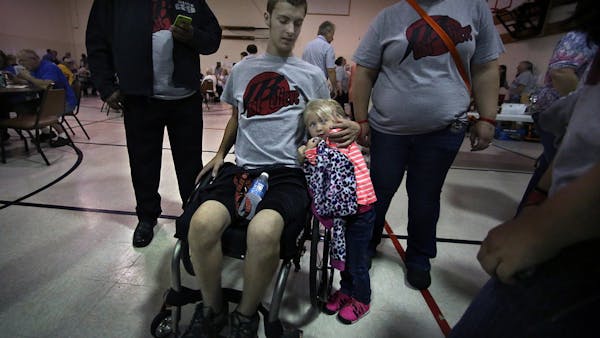Ryan Anderson is not yet 2, but he is already a veteran of the Luck Area ATV Club.
As his family prepares for its weekly trail ride through the woods of western Wisconsin, Ryan is strapped in to the Polaris Ranger, his helmet secured to the front seat with a blue bungee cord. His father explains why: Ryan's neck is too weak to support the helmet, so the cord is also needed to keep him safe.
"Any age can be on them," said Bryan Anderson, who often takes Ryan and his 4-year-old son off-roading. "You just have to drive responsibly. … The kids love it."
For those who love the great outdoors and enjoy a thrilling ride, few things equal the fun of four-wheeling. Ridership nationwide has grown to 35 million, including more than 700,000 riders in Minnesota.
But some ATV enthusiasts are gambling with their children's lives. Instead of buying off-road vehicles specifically designed for young riders, many parents are letting their children drive adult-sized ATVs that can exceed 60 miles per hour and are as difficult to control as a car.
Across the country, nearly 1,200 children have been killed and another 350,000 hospitalized after ATV accidents over the past decade, according to the U.S. Consumer Product Safety Commission. About 90 percent of the children who died were riding off-road vehicles built for adults, recent medical studies show.
"ATVs are not toys. They are very powerful and often unstable machines that need to be used very, very carefully," said Robert Adler, a commissioner at the CPSC, which regulates the ATV industry.
Four-wheelers have a high center of gravity and are prone to rolling over, leading some engineers and safety experts to conclude the machines pose dangers for drivers of any age. Consumer groups and pediatricians have pressured regulators to ban children from adult ATVs, but manufacturers have pushed back.
The federal government mandates that children younger than 16 should not ride on adult-sized vehicles, a rule the industry supports. But federal regulators have left enforcement to the states. And in state capitols across America, ATV riders have emerged as a powerful political force, winning looser regulations for young drivers and greater access to public trails and roads.
Minnesota, home of two major ATV manufacturers, is one of 40 states that have defied the federal standards and instead passed laws and rules that typically allow children as young as 12 to ride adult ATVs. Nineteen states have no minimum age. The vehicles carry labels saying children should not operate adult ATVs, but the warnings often go unheeded.
Since 2003, 34 children were killed in off-road-vehicle accidents in Minnesota, and more than 700 were hospitalized for injuries, according to a Star Tribune analysis of state records. All but four of the fatalities occurred when kids were driving adult vehicles, often with other children as passengers. Five Minnesota children died on snowmobiles during the same period.
"The warning label means what it says," said Paul Vitrano, vice president of government relations for Medina-based Polaris Industries, the No. 1 ATV maker in North America.
But even when the worst happens, some families stick by their four-wheeling habits. Sixteen-year-old Josh Benson grew up riding ATVs in Hinckley, Minn. This summer, his legs were paralyzed after crashing during an ATV ride with his girlfriend. Doctors say he won't walk again, but Benson wants to prove them wrong. In fact, he hopes he will one day return to the seat of a four-wheeler.
"I love ATVs, and I am not trying to downgrade them or anything, but they can be very dangerous," Benson said. "I have found that out."
Fun, useful — and dangerous
In some of Minnesota's northern counties, more than half of households own at least one off-road vehicle. Some families have an ATV for each member.
Cari DeVine and her husband spent more than $20,000 on ATVs so they could join their two teenage children on four-wheel excursions. "It's one of the few times when the kids get along for the whole day," said DeVine of Forest Lake.
More than 70 percent of riders in Minnesota said they use ATVs so they can "do something with my family," according to a 2009 study led by Ingrid Schneider, a professor at the University of Minnesota. "There is research to show that the family that plays together stays together," she said.
But many children are riding on their own. In most of the 150 Minnesota accidents reviewed by the Star Tribune, children were four-wheeling with no parental supervision. Few had gone through training, and dozens were not wearing helmets.
"Too many parents are using these machines as baby sitters," said Mike Hammer, who was Minnesota's top off-road regulator until he retired this summer.
Accidents often take place close to home. Some children lose control while performing dangerous stunts, such as doing wheelies or doughnuts. Many crashes happen at low speeds on relatively flat terrain. Most accidents involved a rollover.
Engineer Randy Nelson, an avid motor sport racer who for decades has designed parts and accessories for ATVs, said the vehicles simply aren't safe for young operators.
"I have seven children of my own, and none of them ride ATVs," Nelson said. "The hazard is just so horrific."
ATVs require what the industry calls "active riding," in which riders shift their weight to control the machine while making turns or climbing hills. But the typical machine in Minnesota weighs more than 600 pounds, registration records show.
"Kids often don't do this well," said Charles Jennissen, an Iowa emergency room doctor who has led several studies on children's ATV riding habits. "The machine often acts on them rather than them acting on the machine."
His recent survey of 4,000 teenagers in Iowa found that 57 percent of those who had ridden an ATV had been involved in at least one accident. "That says it is very difficult to operate an ATV safely, but it is very easy to make a mistake," Jennissen said.
When children are injured in ATV accidents in Minnesota, they are often taken by helicopter to North Memorial Medical Center in Robbinsdale, which has one of the best trauma units in the Upper Midwest.
Dr. John Lyng, who works in the emergency room, said the hospital treats roughly one person a week for ATV-related injuries. The patients, he said, are disproportionally younger than 16.
"I've heard kind of a mixed reaction from parents," Lyng said. "Some express regret and remorse. I've heard comments like: 'I never wanted him to ride this thing anyway.' "
Families make riding a fun outing
For many families and riding clubs, four-wheeling doesn't look anything like an extreme or dangerous sport.
In western Wisconsin, the weekly ride of the Luck Area ATV Club is a way for friends to enjoy the scenery around St. Croix Falls and share a meal. They do it every Thursday from May to October.
On a recent outing a few miles east of the Minnesota border, Abby and Grace Thoreson were squeezed in the seat of their mom's Polaris Ranger. Their 78-year-old grandmother drove another vehicle. Other riders included a hair stylist, a schoolteacher and a retired electrician.
Altogether, 35 people showed up for a sedate, slow-speed cruise past the farms and hills of Polk County, including three generations of two different families. A pair of toddlers rode in car seats, despite a manufacturer warning that all riders must be at least 12 years old. Few of the adults wore helmets.
"Most parents don't see the safety issues because the kids are having fun," said Don Ryan, chief prosecutor in Crow Wing County, where several children have been killed and injured in ATV accidents.
Four-wheeling is at the center of the Thoresons' social lives. They typically ride at least twice a week in the summer, taking their three vehicles on camping trips and Sunday outings. Ron Thoreson hopes his preteen daughters get hooked on the sport.
"Even when they get older and go to college, maybe they will still like to come home on weekends and go four-wheeling with their old mom and dad," he said.
For years, the girls begged for a chance to ride by themselves. Their parents finally agreed this year.
"I always worry about the girls," Ron Thoreson said. "They could have an accident. It is pretty easy, especially at their age. But you can't live in a glass bubble, either."
But the Thoresons have imposed limits on their daughters. The girls can drive their parents' adult four-wheelers only if they stay near the house and go slowly. They must always wear helmets. If they're caught breaking the rules, they lose their riding privileges.
In May, one of their friends went too fast in a utility vehicle and overturned. The 13-year-old broke her arm and leg. The Thoresons used that as a safety lesson.
"It's not a toy, so don't play with it," said Abby, who is 9. "You have to respect it."
A joy ride can go wrong
Brad Bullerman let his 2-year-old son go riding with his nephew last year while he and his wife went Christmas shopping. It was a snowy day, and Bullerman figured the boys would be safe cruising at their grandparents' farm in Nobles County, as they had done many times before.
Micah rode in front, cradled between the arms of his 14-year-old cousin. They went past the hog barns, driving slowly along a creek. Then Micah's cousin tried to climb a slope. The Kawasaki 360 slid sideways and tipped over.
Micah was pinned beneath the 600-pound vehicle. His cousin couldn't lift it. When the ambulance arrived, Micah wasn't breathing.
"It was the scariest thing in the world," said Bullerman, whose son is still recovering from a brain injury. "I see now there is a reason you are supposed to be 16 to drive them."
Bullerman hasn't given up on ATVs, but he said he will make sure an adult is driving if his three children ever ride again. "You have to be physically able to see them," he said. "Things can happen and if you're not right there, it's too late."
Families rarely file lawsuits against ATV companies and often blame themselves when there is an off-road death or injury, according to court records and interviews with more than two dozen families involved in crashes.
Four years ago, 15-year-old Jed Brown went for a "joy ride" on his uncle's Polaris Ranger, illegally carrying two teenage friends on the adult vehicle. The boys were swerving down a gravel road at 15 to 20 miles an hour when the ATV flipped over, according to the accident report. Jed died on his way to the hospital. His friends weren't harmed.
Tracy Brown, Jed's mother, said it "makes me want to cry" when she hears that others have stopped four-wheeling because of Jed's crash. That's not what Jed's life was about, she said.
"He died doing what he loved doing, just like a mountain climber."
Little demand for small machines
ATVs designed for children are supposed to be the safer option, but it is a choice few families are making.
Tousley Motorsports in White Bear Lake is among the largest motor sports dealers in the Midwest. One day this summer, it carried only two child-size ATVs, compared with 57 adult machines, in the showroom.
The youth market "is not worth messing around with," said David Glassman, co-owner and president of the dealership.
In visits to two dozen dealers in the Twin Cities this summer, the Star Tribune found that half didn't have any new youth machines. Managers said they don't carry many because children don't want to ride them, and parents don't want to pay so much for a four-wheeler their children will quickly outgrow. Children's models range from $1,999 to $4,399, while adult ATVs were priced as low as $3,949.
Kerrigan Ekholm, 16, said her family got rid of her 90 cc machine after just six months.
"My brothers always had to walk it up hills," said Ekholm, who has been four-wheeling since she was 12. "It didn't have a lot of power."
ATV dealers are supposed to terminate a sale if they find out an adult machine will be operated by someone younger than 16, as mandated by federal regulators. Compliance has been historically low. Seven of 10 dealers were willing to overlook age barriers in a 2010 investigation conducted by the U.S. Government Accountability Office.
Minnesota dealers said it is easy for parents to get around the rules by checking out the adult models with their kids at one dealership and then making a purchase at another.
"I see that all the time," said William Hayes, a veteran salesman at Northway Sports in East Bethel. "It's a don't ask, don't tell situation for me."
The industry does not publicly release data showing the size of the youth ATV market. Polaris said it sold 82,000 child-sized machines in the past five years, or 20 percent of its total ATV output.
"We certainly encourage youth models," Vitrano said. "Unfortunately, many times, that advice is not heeded."
Now an evangelist for safety
Six children in International Falls sit at a kitchen table, comparing their riding experiences.
Each of them has been involved in at least one off-road accident. Four hit trees. Two were riding ATVs that tipped over. And two of them collided with each other.
None of the kids, ages 12 to 18, were hospitalized after these crashes. But they said they all learned something important: They aren't invincible.
"As soon as you start believing nothing can happen to you, you start going a little faster," said Isaac Dahl, 12. "Maybe I can make this hill. Maybe I don't need a helmet. As long as you are aware of what can happen, it usually won't."
The teenager responsible for bringing the group together is Elayna Werdier, who became a safety evangelist after watching her 5-year-old sister, Kristelle, die in an ATV crash two years ago.
The girls went to a friend's house with their parents. There was an ATV in the yard, and one of the adults offered a short ride. The girls shouldn't have been on the machine, which was built for a single rider. The vehicle rolled over when the driver tried to make it up a steep hill. It landed on Kristelle, who died at the scene.
"Even though it was not my fault, I still feel guilty," said Elayna, 14, who was riding on the back but escaped injury when she jumped off. "One moment you can be all smiles and enjoying everything about life, and the next you're wishing you had a time machine."
After the crash, Elayna wondered what she could do to prevent other children from getting hurt. She doesn't want to ban ATV riding by kids. She still loves four-wheeling. "I like things that go fast," she explained.
But she knows that many kids in this part of northern Minnesota are taking unnecessary chances on their ATVs. She and her friends see them driving without helmets, jumping off culverts and driving too fast. Sometimes as many as six children ride on a single machine.
"Are a lot of kids taking risks? Yes, no doubt," said Brian Jespersen, the Koochiching County sheriff. "We try to get the ones we can."
Elayna decided the best way to improve safety was to persuade as many people as she could to get safety training. Last year she attended a local class with seven friends in tow. Three more have agreed to do it soon.
Nikki Werdier, Elayna's mother, said she is inspired by her daughter's commitment to protect others, but she wishes the state would do more. She thinks that there should be strict restrictions on private property, and that everybody who drives an off-road machine should be required to take training.
"We know you'll never get people to stop riding," Nikki Werdier said. "But you can get them to ride more safely."
Next: Part 2: States ignore federal ATV age limits
Go to Part 3: State to state, ATV rules are all over the map

Trail section at one of Minnesota's most iconic spots closing for rehab

Will 'shotgun only' zone for deer in southern Minnesota be abolished?

Four Minnesotans catch salmonella in outbreak linked to basil sold at Trader Joe's



